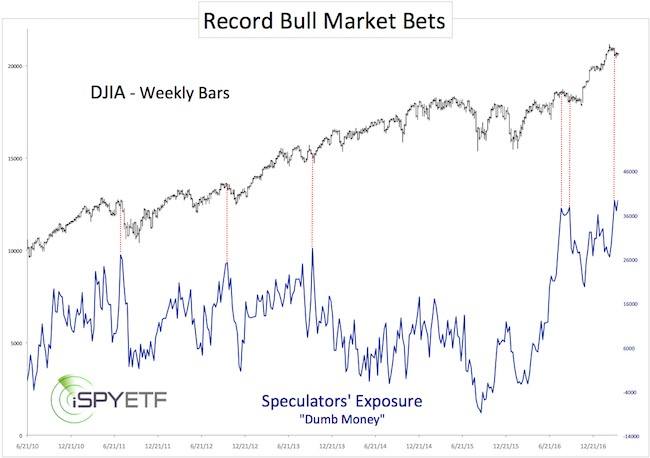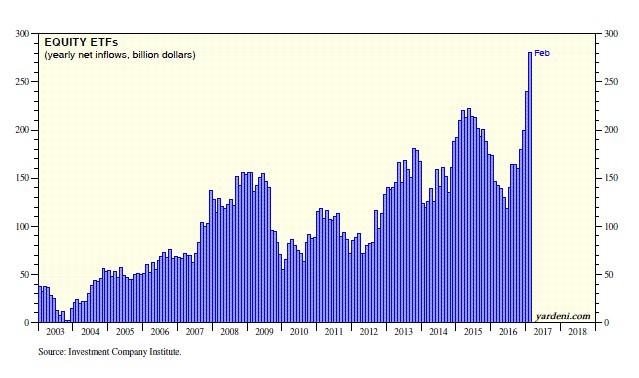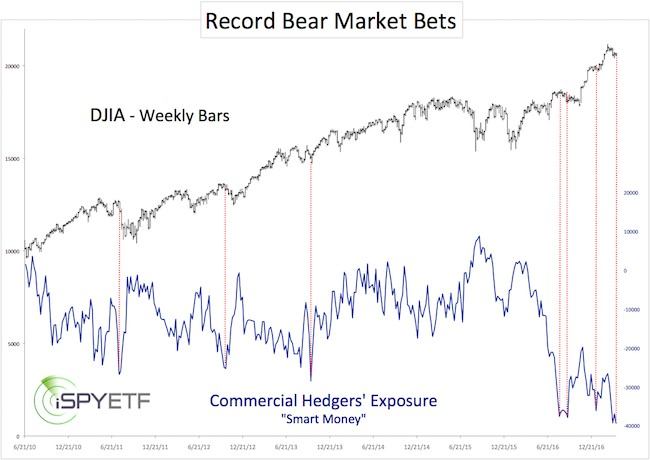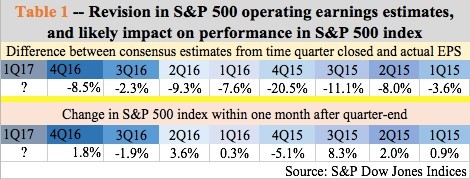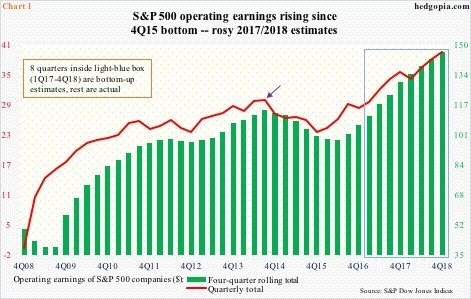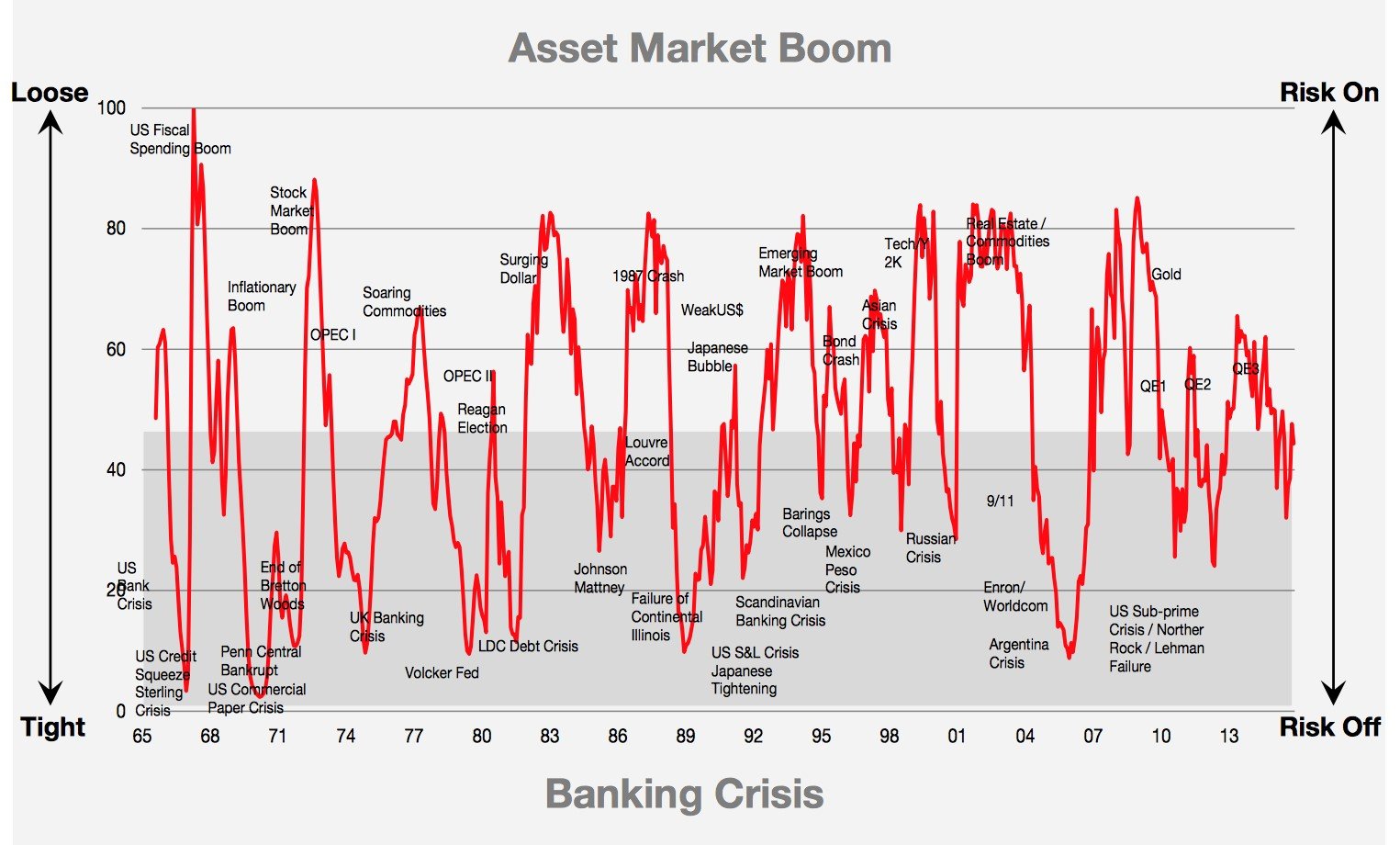In this article, I will discuss how the dumb money is driving the stock market higher. When reviewing the behavior of dumb money investors, human psychology comes into play. The reason psychology is more important in describing the behavior of dumb money investors than smart money investors is because professional investors are aware of the logical fallacies which can harm performance. This isn’t to say professional investors don’t make mistakes, but at least they’re making a concerted effort to avoid common pitfalls. The other advantage professional investors have is that they do real research based on data. We know dumb money investors are not doing research because they bought stocks at the height of the dot com boom and are repeating the same mistakes now.
The most basic, but most powerful factor in reviewing why the dumb money is so bullish is recency bias combined with herd mentality. The thinking is that everyone is buying index funds and index funds have done well in the past few years so it must be a good decision to get in on. Recency bias effects herds because the herd gets to proclaim how great it’s doing and bash anyone who was skeptical of the rally. When I bring up any factors about the economy or valuations to members of the herd, they get confused. They don’t understand how there could be any bearish factors if stocks are doing well. That justification for being bullish because stocks are up is the very reason why stocks ignore fundamentals.
The chart below shows the historical dumb money weekly investment into the Dow Jones Industrial Average. As you can see, the dumb money is the most bullish it has ever been in this cycle. There was a significant dip in speculation in 2015, but the market was able to hold steady because of zero percent interest rates and cycle peak buybacks in Q4 2015. The jump in dumb money speculation and short covering after the election gave this rally the support it needed as the Fed started to raise rates at a quicker pace.
The chart below is almost identical to the chart above because the dumb money is putting its money into passive investments. At the end of bullish cycles, the strategy of buy and hold increases in popularity because investors believe most stocks always move higher over time. Making the argument against passive investing is tough because most mutual funds can’t beat their benchmark when you account for the fees they charge. A few years ago, I was one of the proponents of using ETFs instead of mutual funds. Even with this great performance when everyone piles into any asset, it does poorly after the bandwagon becomes too filled up. It’s tough for me to say whether active management will beat passive management in the coming downturn because mutual funds own many of the stock in the index. Luckily it doesn’t matter because my goal isn’t to lose slightly less money than the index; the goal is to preserve almost all my capital.
On the other side of the ledger, the smart money commercial hedgers are the most bearish they’ve ever been. While it’s tough for me to tell how well most mutual funds will do in a bear market, the professional investors who are hedging are the ones who will be the least scathed by the correction. The historical precedent of bandwagon trends reversing makes me think active investing will take market share from passive investing after the crash. The investors who are burned by the market fall may look at the few investment vehicles which outperformed and realize they are mostly active funds. One supporting example of this reversal of a bandwagon effect is how home equity loans still haven’t come near their peak in the mid-2000s before the bubble burst. Investors may make the same types of mistakes, namely taking too much risk by overpaying for an asset, but they won’t make the mistake in the same vehicle.
You may be asking why the smart money is more bearish than the dumb money. There are many reasons for this. One reason can be seen in the chart below. The negative revisions to S&P 500 earnings have taken a chunk out of actual earnings. The trend bottomed in 4Q 2015, but the negativity has continued.
Revisions don’t matter to bullish speculators because they are already focusing on future earnings estimates which are optimistic. One of the rules of the earnings game is that future earnings are always bright. The estimates are dropped right before earnings season so firms can beat them when they report. The problem is the earnings beats miss the original expectations. The bull market stalled when earnings started to decline in 2014 and 2015. It’s tough to glaze over an earnings recession. This time there is a different chink in the earnings machine. Future expectations have gotten out of hand as you can see in the chart below. Great earnings growth is supposed to make up for a hawkish Fed, but its doubtful profit margins will be able to reach a new record high with a tight labor market.
Obviously, I can’t fit every reason active managers may be bearish on stocks into half an article, but I think the most critical one is shown in the chart below. The chart shows the relative positioning central banks have taken historically. When central banks are loose, the ‘risk on’ trade is in play as liquidity is high. QE1, 2, and 3 provided some liquidity, but now it’s waning as the Fed hikes rates and unwinds the balance sheet. I have doubted the Fed’s hawkish policy in the past, but I remain consistent on the perspective that after monetary policy tightens, there will be a crisis.
Conclusion
The dumb money differs from the smart money. Dumb money investors are plowing money into passive ETFs because of past performance. Smart money investors who are hedging are doing so because the central banks are about to lower the liquidity in the markets and because profit margins don’t increase when the labor market is tight.
Don Kaufman: Trade small and Live to trade another day at Theotrade.
Neither TheoTrade or any of its officers, directors, employees, other personnel, representatives, agents or independent contractors is, in such capacities, a licensed financial adviser, registered investment adviser, registered broker-dealer or FINRA|SIPC|NFA-member firm. TheoTrade does not provide investment or financial advice or make investment recommendations. TheoTrade is not in the business of transacting trades, nor does TheoTrade agree to direct your brokerage accounts or give trading advice tailored to your particular situation. Nothing contained in our content constitutes a solicitation, recommendation, promotion, or endorsement of any particular security, other investment product, transaction or investment.
Trading Futures, Options on Futures, and retail off-exchange foreign currency transactions involves substantial risk of loss and is not suitable for all investors. You should carefully consider whether trading is suitable for you in light of your circumstances, knowledge, and financial resources. You may lose all or more of your initial investment. Opinions, market data, and recommendations are subject to change at any time. Past Performance is not necessarily indicative of future results
Recommended Content
Editors’ Picks
AUD/USD tumbles toward 0.6350 as Middle East war fears mount

AUD/USD has come under intense selling pressure and slides toward 0.6350, as risk-aversion intensifies following the news that Israel retaliated with missile strikes on a site in Iran. Fears of the Israel-Iran strife translating into a wider regional conflict are weighing on the higher-yielding Aussie Dollar.
USD/JPY breaches 154.00 as sell-off intensifies on Israel-Iran escalation

USD/JPY is trading below 154.00 after falling hard on confirmation of reports of an Israeli missile strike on Iran, implying that an open conflict is underway and could only spread into a wider Middle East war. Safe-haven Japanese Yen jumped, helped by BoJ Governor Ueda's comments.
Gold price jumps above $2,400 as MidEast escalation sparks flight to safety

Gold price has caught a fresh bid wave, jumping beyond $2,400 after Israel's retaliatory strikes on Iran sparked a global flight to safety mode and rushed flows into the ultimate safe-haven Gold. Risk assets are taking a big hit, as risk-aversion creeps into Asian trading on Friday.
Dogwifhat price pumps 5% ahead of possible Coinbase effect

Dogwifhat price recorded an uptick on Thursday, going as far as to outperform its peers in the meme coins space. Second only to Bonk Inu, WIF token’s show of strength was not just influenced by Bitcoin price reclaiming above $63,000.
Israel vs. Iran: Fear of escalation grips risk markets

Recent reports of an Israeli aerial bombardment targeting a key nuclear facility in central Isfahan have sparked a significant shift out of risk assets and into safe-haven investments.
